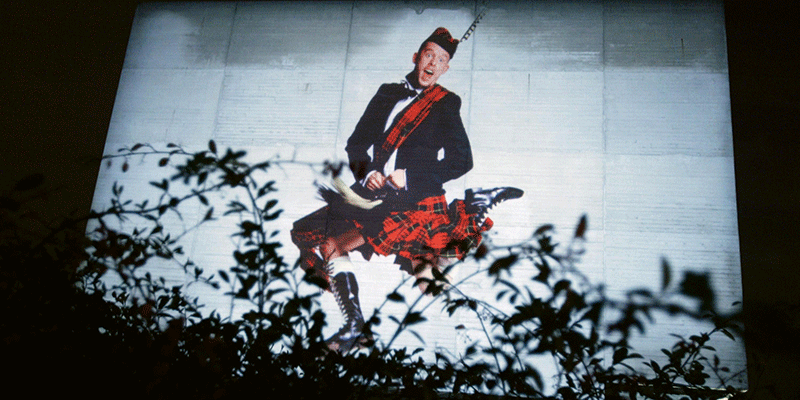We remember the man behind the headlines.
Lee Alexander McQueen would’ve been 50 today. An icon and trailblazer for today’s generation of creatives, we pay homage to one of the most influential designers of the 21st century.
ALSO READ:
The other iconic Thierry Mugler looks worthy of the red carpet
An inside look at Haifa Wehbe’s first ‘Beau Voyou’ collection
From humble beginnings Lee Alexander McQueen was born on a council estate (social housing) in the East End of London. He was more likely to become a cab driver, like his father, yet he became the most celebrated fashion designer Britain had ever witnessed rise to fame.
A young McQueen was a Saville Row apprentice at the age of sixteen. He had a natural instinct for drawing clothes and had been doing so since the tender age of three. McQueen’s ambition to become a fashion designer was encouraged by his mum, Joyce who always believed “Lee was different”. Entering the fashion industry in the 90s as a working class East Londoner was as painstaking as breaking a mirror and earning yourself seven years of bad luck, yet somehow McQueen managed to do so without pretending to be anything other than what he was. Nicknamed ‘the yob with a needle’ and ‘the hooligan of fashion’ he soon built a reputation for himself but McQueen wasn’t bothered with the clichés of fashion and prided himself in being honest. He was there to change the way people viewed the industry and true to his own words: “when I’m dead and gone, people will know that the 21st century was started by Alexander McQueen.”
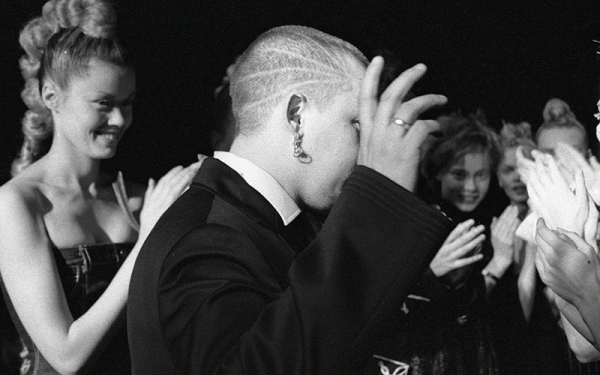
McQueen’s suffering began when he was only nine-years-old, a time in his life when he witnessed a number of violent confrontations in his sister’s marriage; sadly, he too lived through her abusive relationship. This experience shaped his belief of what it meant to be a woman; a somewhat Bell Jar view, to McQueen, it meant suffering, pain, entrapment and darkness. Later on these were the very themes that he explored in his work. McQueen’s showmanship became a platform to express the morbid experiences of his childhood. He wanted to shock spectators that came to watch. “I don’t want to do a show feeling like you just had Sunday lunch. I want you to feel repulsed or exhilarated.” In A/W95 his infamous collection Highland Rape received negative press, models came down the catwalk looking as though they had been attacked, debased and brutalised. McQueen was accused of being ‘misogynistic’, ‘lewd’ and ‘sadistic’. Despite the negative press McQueen was canny and the constant controversy kept the press turning up to see what else he had behind the curtain.
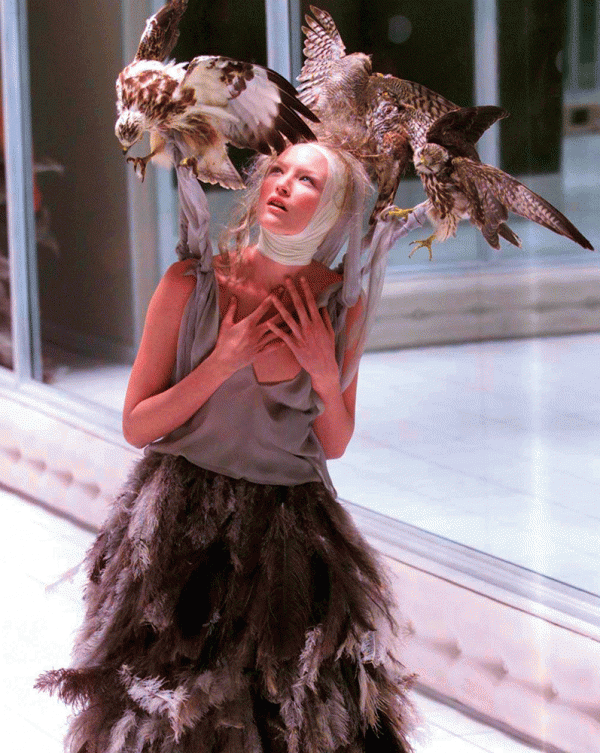
It is impossible to honour Alexander McQueen’s career without mentioning the late Isabella Blow. Appointed as British Vogue’ fashion editor, she found herself sitting in the audience at McQueen’s 1992 MA graduate show: Jack the Ripper Stalks His Victims. It has been documented that Isabella ‘discovered’ McQueen at his MA show and bought the entire graduate collection. Blow instantly fell in love with his designs and became McQueen’s advocate declaring him “the wild bird of fashion” and comparing him to the likes of Andy Warhol. McQueen, tired of their closeness, distanced himself from Isabella in an extremely public fall out. Although they still kept in touch, their relationship soured as he became the formidable Alexander McQueen. Ashamed of her lack of relevance in the fashion industry and incapable of keeping a job, Isabella Blow committed suicide in 2007.
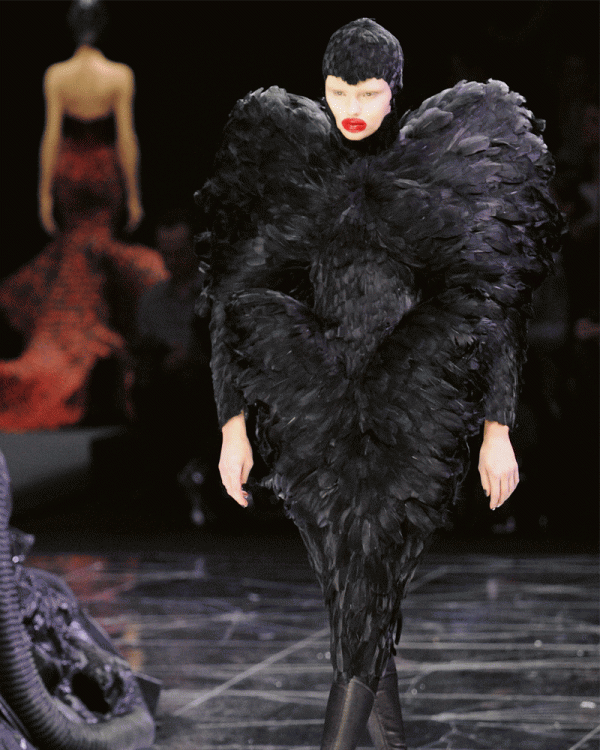
McQueen’s rags-to-riches narrative fueled much curiosity into the designer’s personal life. Growing up on an estate gave him a level of authenticity that other designers just did not have. He had grown up in London and experienced it for what it really was: gritty, energetic, real and sometimes intimidating. Despite Kate Moss and Naomi Campbell being a part of his circle, he notoriously spoke out about how “fake” the industry was. It was his candidness that attracted people to him as well as his ability to evoke emotions through fashion performance. Fashion before McQueen had been women in pretty dresses where politics and feminism had no place. McQueen disrupted the industry giving a voice to empower women as he explored the inner workings of his sometimes twisted mind. In 1996 McQueen won the British Fashion Award’s British Designer of the Year and went on to receive the award on three separate occasions, including receiving a CBE from the Queen for his contributions to the fashion industry. His vast influences to the industry knew no bounds and he became an international treasure. McQueen notably referenced Middle Eastern culture in his S/S00 show Eye, since then his clothing has been received with appeal in the United Arab Emirates. So much so that Sarah Burton, creative director and friend to McQueen conceptulaised the largest stand-alone boutique in the region which houses his beautiful collections that continue to live on under the Alexander McQueen brand.
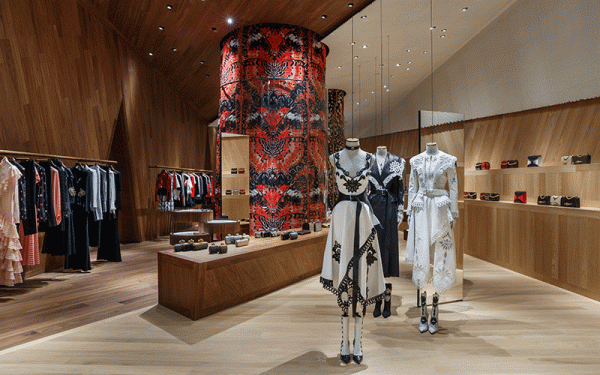
Behind all his success was a man who had been dealing with profound melancholy. In February of 2010 shock waves were sent through the fashion industry with his untimely suicide. It was a sad day for the industry and for everyone who had been a part of his iconic journey. Alexandra Shulman, the late editor-in-chief at British Vogue poignantly described the loss of such a remarkable person “His death is the hugest loss to anyone who knew him and for very many who didn’t.” McQueen cultivated his own silhouette and left the world with his legacy, subversive art and limitless performance; McQueen will be eternally revered as the greatest fashion designer this century will ever pay tribute to.
Media: Getty








